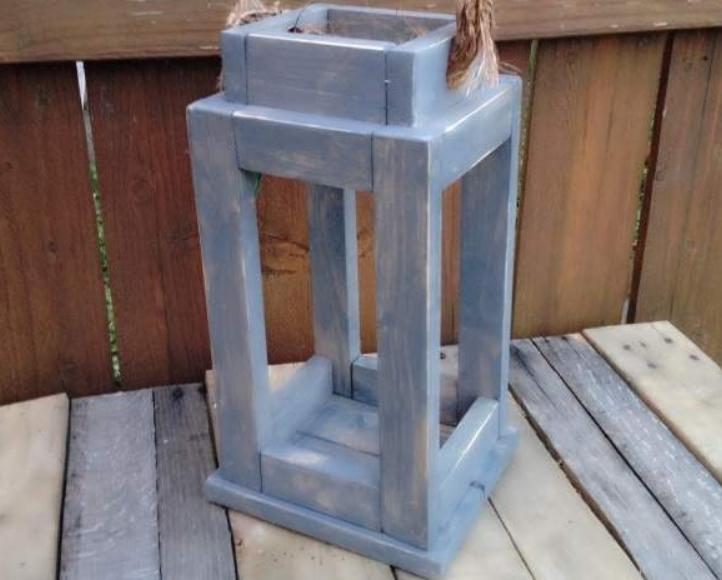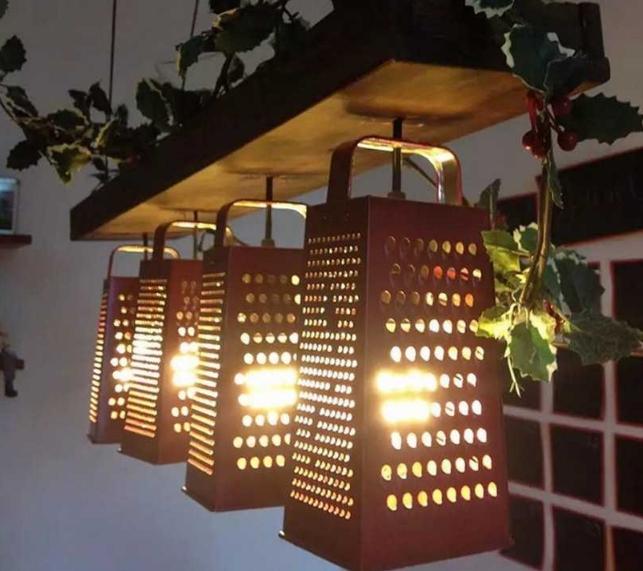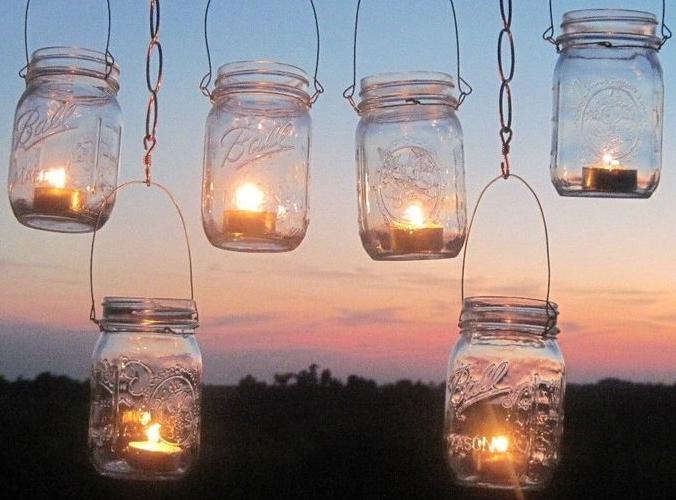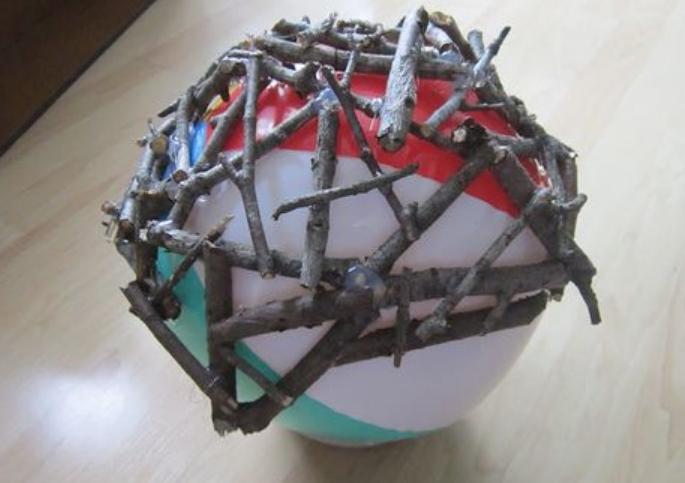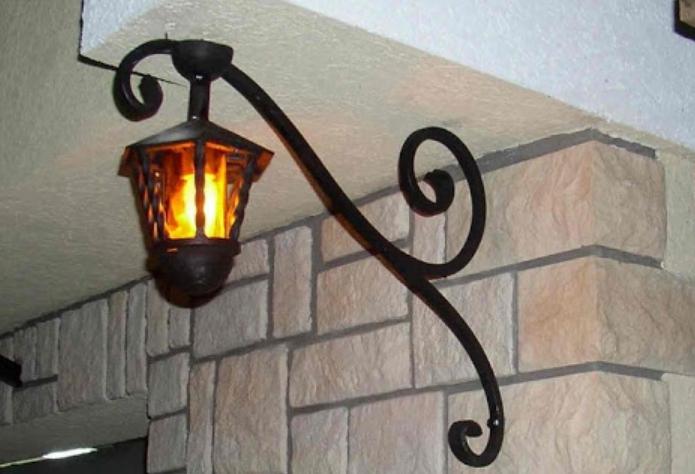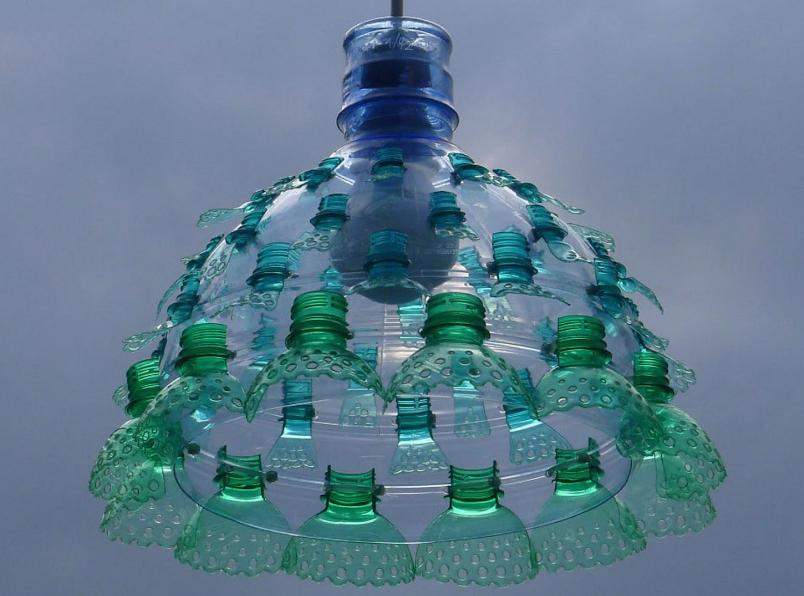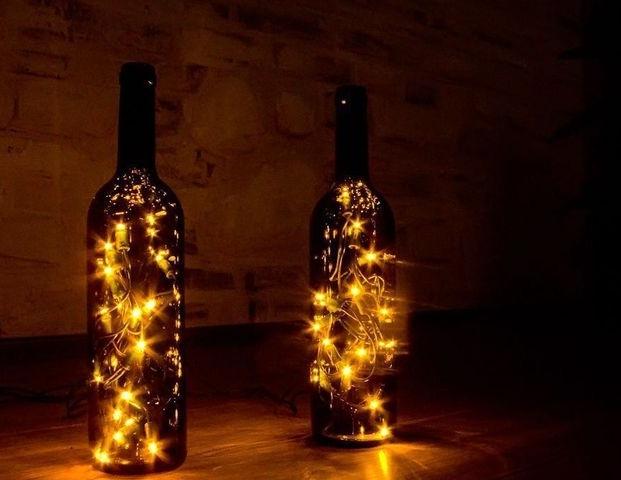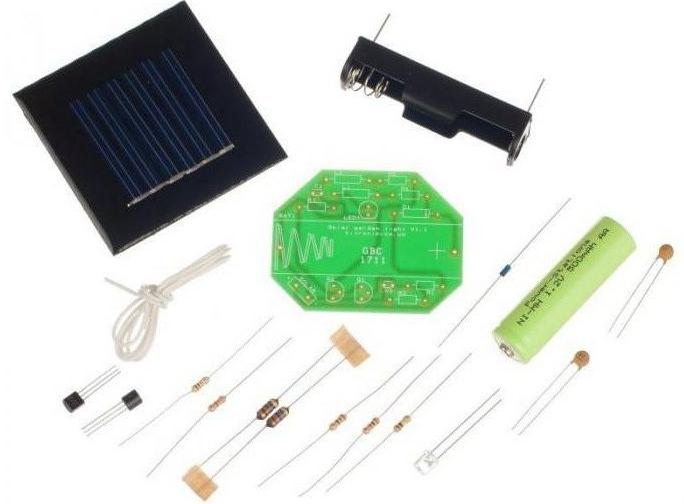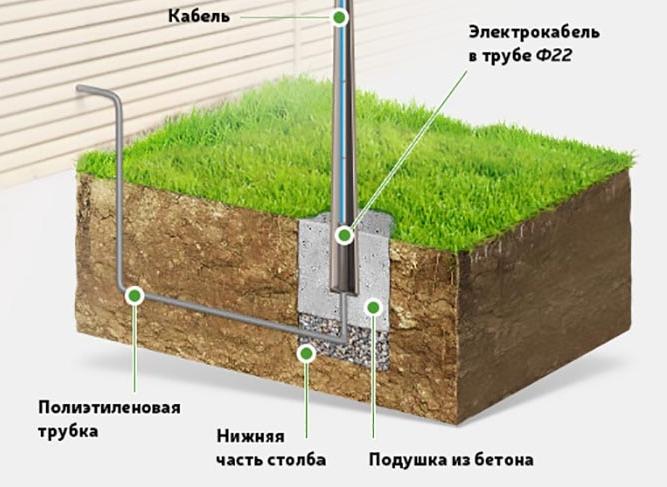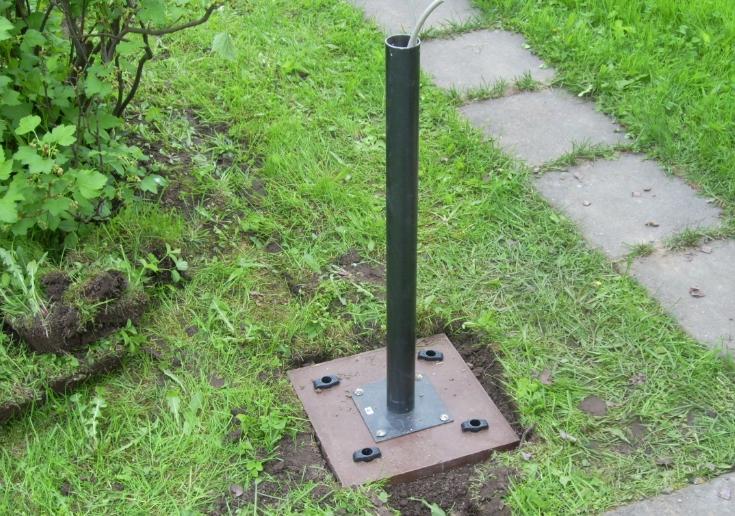How to make street lamps from improvised materials
It is not difficult to make a street lamp with your own hands, because for this you can adapt various improvised materials. The main thing is to choose the right solutions and do the job right, so that homemade equipment provides high-quality light and at the same time was safe.
What can be used to make lighting fixtures
There are many options, it is important not to limit your imagination and take into account the design site. The most commonly used are the following solutions:
- Steel products or blanks. It can be a ready-made container with slots or holes, as well as forged products or versions assembled by yourself with rivets or welding.
- Lights made of wooden slats or natural material - twigs, branches, etc. They are good for the simplicity of processing and accessibility.The simplest lights are often made of wood.
- Aluminum and copper are also good for work, but it can be difficult to find suitable containers or blanks. Metals are easy to work with and are not afraid of heat.
- Plastic is good for its durability, weather resistance, and affordability. You can find containers of the right size without much difficulty, but you can put in such fixtures only lamps that do not get very hot.
- Glass containers - a convenient solution that well protects the bulb and at the same time looks stylish. The main thing is to choose options of the right size and shape.
You can experiment with different materials, as it is impossible to determine the quality of the light before manufacturing.
Interesting variants of designs
To make it easier to understand how to make a street lamp with their own hands, let's consider some interesting options. You can use them as an example, or you can come up with something of your own:
- Using a scrubber as a lampshade. An ordinary household fixture with a tetrahedral shape can be adapted both as a separate lamp and as a plafond in a chandelier.The graters are suitable for making a chandelier in a gazebo.
- The use of tin cans is the simplest, but very unusual solution. You just have to nail holes in them to create the desired pattern or pattern.Three steps and the lantern is ready.
- A wooden post with a cutout. If there is a suitable element, you can make a corner cutout in it and put an overhead or built-in light. This option involves the use of ready-made equipment, but due to its installation in a wooden element, it looks unusual.
- You can simply take a screw-in glass jar and place a candle inside. It turns out an ornate lamp that can also be used as a decoration.Candles do not give bright light, but provide a romantic setting.
The video will show how to make a light fixture out of a bar.
Street lamps made of natural materials
Most often in this case, wood or vine is used, but you can also take waste from construction work - slats, strips, etc. There are many options, you can disassemble the simplest of them:
- Vine or long rods are collected. As a template, it is easiest to use an inflatable ball or a ball of suitable size. At first, the workpiece should be carefully braided, leaving a hole for the cartridge, through which the template is extracted after completion of the work. This solution can be used both on the street, and in the country house or bath.The process of making a light fixture from twigs.
- Use sawn trunks of small diameter. Large holes are drilled in them, and then the workpieces are glued together, as a template will do a balloon. The surface of the splits for protection against moisture is better to cover with varnish beforehand.
- To make a plafond, the slats are arranged in tiers and glued or nailed together. The shape can be both classic quadrangular and triangular or polygonal.
Some people use reeds and other flexible materials to braid an improvised floor lamp, the frame for which it is easy to make from twigs or branches. Such solutions look very original.
How to make a lantern out of metal
In this case, it is worth selecting a method of manufacture based on your own skills and equipment that is on hand. If there are skills in creating forged products, then there can be many options, as it is possible to form a plafond of any size and configuration. But even if you have the simplest set of devices at hand, you can make different versions of lanterns:
- Use different containers, making notches or holes in them in any number and order to achieve the desired level of illumination. Or you can roll up a plafond from tin or other flexible metal to provide directional lighting.
- From the profile for plasterboard is not difficult to assemble the frame of the lantern square or other shape. Angles and self-tapping screws are used to make a base, and the holes in it can be closed with pieces of polycarbonate or glass, which for reliability is better planted on a sealant.
- You can buy billets of forged elements and weld them to a simple framework of metal rod or angle.Forged options are strong and durable.
Homemade lamps from plastic
To make decorative lampshades and other similar crafts, you can use different plastic products, which are most often just thrown away. You can literally in half an hour or an hour make a stylish lantern - the drawing is not needed here, as it is not difficult to figure out the work:
- It is not difficult to assemble a stylish lampshade from plastic spoons, using a balloon as a template. Before making, the handles of the spoons must be cut off, and it is easiest to glue them with superglue in the form of gel. The rows are stacked with an offset similar to the scales. The result is a chandelier that gives diffused light.
- If you take a large bottle used in coolers and some ordinary plastic bottles (preferably colored), you can make an interesting chandelier. To do this, the top of the bottle is cut off, and the outside of it is pasted with parts of the bottles, as shown in the photo below - the bottom half, and the higher half, the smaller fragments. And in the neck it is convenient to mount a lamp holder.It will not be difficult to make such a lamp for outdoor use.
If you have accumulated a lot of plastic cups, you can glue them in the form of lampshade bottoms inside.
Glass Bottle Lantern
If you have beautiful glass bottles or cans, you can make a lamp for a summer house or pergola near the house. There are several options, the simplest of them are as follows:
- A garland with bright white lights is placed inside, its size is chosen according to the capacity of the bottle. It is desirable to close the neck or seal it with sealant, so that moisture does not get inside.A garland inside the bottle is a stylish solution for decorative lighting.
- If the neck of the bottle is wide enough to fit a light bulb inside, you can use it as a lamp. The main thing here is to think about how to fix the cartridge at the top, so that the elements are held securely.
- You can use a device for cutting bottles or folk ways to separate the bottom. In this case, it will not be difficult to make a light fixture out of several blanks. A piece of board or wooden bar is used as the base.
It is much more convenient to use glass jars, as the cartridge can be fixed directly in the lid, which will allow you to get a lamp in literally 10 minutes. The main thing is to seal all the gaps around the perimeter with weatherproof sealant.
Features of connecting homemade lanterns to the network
To ensure the safety of homemade equipment, you need to properly connect it to the network. Therefore, it is worthwhile to understand this issue in detail, in order to exclude any problems:
- The cable should be conducted through the air to the place where the lanterns are installed or underground. The second option is more complicated, but safer, in this case the cable is laid in a polyethylene pipe at a depth of not less than 100 cm, above the wire is led in a corrugated tube.Example variant of laying the cable in the ground.
- If the lamp is hung at a great height, it will be necessary to make and lamppost with their own hands. It is most convenient to use a pipe, as it is more convenient to pull the cable up inside it, you can buy a ready-forged version. And it is easiest to use a wooden beam or log, but in this case it is better to lead the wire through the air.Homemade base for a street lamp.
- Only sealed pads and terminals are used to connect the lamp to the wiring. With their help, you can connect the wires and protect this place from moisture, you can not make twists and wrap them with duct tape.
Video: 3 lighting fixtures made with their own hands from materials such as chain-link mesh, metal chain, etc.
With their own hands it is not difficult to make a variety of lanterns, which can be placed outside, under sheds or in gazebos. It is best to use LED lamps in the lights, as they do not heat when working, consume little electricity and last a long time.
